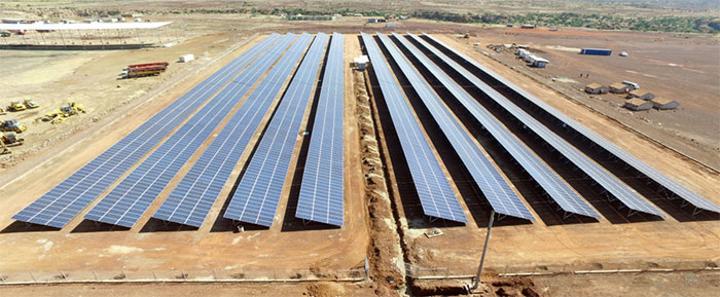Africa-Press – Eritrea. Note: This is the third article in a multi-part series reviewing Eritrea’s participation at the 2022 High-Level Political Forum and the country’s presentation of its Voluntary National Review report. Part III highlights some of the progress achieved on Sustainable Development Goals 3 (good health and well-being) and 13 (climate action).
In September 2000, world leaders came together at the UN to adopt the Millennium Declaration, committing their nations to a global partnership on development and setting out a series of time-bound targets – with a deadline of 2015 – that would become known as the Millennium Development Goals (MDGs). The MDGs were succeeded by the Sustainable Development Goals (SDGs), a collection of 17 comprehensive, closely interconnected goals, further broken down into 169 targets, designed to be a, “blueprint to achieve a better and more sustainable future for all.”
Eritrea was one of the few countries that entered the SDGs period having achieved most of the health-related MDGs. (Many of those goals were achieved considerably earlier than the 2015 MDG target date.) Its experiences and achievements during the MDGs period have offered a variety of lessons and a foundation to drive forward with momentum.
Notwithstanding myriad challenges, including external aggression, a difficult regional geopolitical context characterized by conflict and instability, a long period under illegal, unjust sanctions, and a spate of hostile financial and economic restrictions and coercive measures, great strides have been achieved in several areas in recent years. Eritrea’s achievements, particularly within its challenging context, are impressive and offer important insights for other countries operating in resource constrained environments. Below, progress for SDGs 3 and 13 is highlighted.
Eritrea’s national health policy aims to maximize the health and well-being of all citizens at all ages and seeks to ensure equity and access to essential health services, utilizing primary health care as a key strategy and consistent with universal health coverage (UHC) principles. Since 2016 a wide set of interventions have been implemented to expand access and improve care for all, and progress is being registered towards achievement of UHC. Health services are heavily subsidized, with patients required to make only nominal payments (which are wholly waived in cases of financial need). Many essential health services are provided completely free of charge, while all patients with certain chronic diseases and other disorders are provided with free care and prescribed medications.
Accessibility, the expansion of health infrastructure, and human resource development have been areas of major focus, with the country constructing and renovating many health facilities, as well as considerably increasing the number of doctors and health professionals. There are now 335 health facilities distributed across the country (comprising hospitals, health centres, health stations, and clinics) – a nearly fourfold increase from 1991, while the number of doctors has been increased from 100 in 1997 to 291 by 2021. Across the same period, the number of dentists rose from 6 to 59, nurses from 625 to 1,474, assistant nurses from 1,220 to 2,918, dental therapists from 11 to 165, pharmacists and pharmacy technicians from 97 to 486, laboratory technicians from 99 to 517, radiologists from 28 to 132, physiotherapy technicians from 6 to 140, and specialized doctors from 5 to 74.
Distribution is also being improved, with more health workers now serving in rural and hard-to-reach areas. Approximately 80 percent of the population lives within a 10 km radius of a health facility and 70 percent within a 5 km radius, representing major improvements from just a few decades ago.
Considerable progress has been made in improving reproductive, maternal, newborn, child, and adolescent health. The maternal mortality ratio dropped from 998 per 100,000 live births in 1990 to 228 in 2015, and 184 in 2019 – an overall reduction of 82 percent. The proportion of deliveries by skilled health workers has risen to 71 percent, the percentage of pregnant women attending at least one antenatal care visit has increased to 98 percent, and more mothers and newborns are now receiving postnatal care within two days of childbirth. Also, between 1990 and 2020, the neonatal mortality rate was reduced by 49 percent, from 35 deaths per 1,000 live births to 18, while the under-five mortality rate was reduced by 75 percent, from 153 to 39. The average annual rate of reduction for under-five mortality between 1990 and 2020 is estimated at 4.5 percent – among the fastest in the world.
At present, neonatal mortality accounts for about 43 percent of under-five deaths and 60 percent of infant deaths, suggesting that continued reductions will be largely contingent upon further improvements in neonatal mortality. Importantly, plans are in place to begin providing more holistic and comprehensive health care for children based on integrated management of neonatal and childhood illnesses in communities and facilities around the country, as well as improving the quality of care in the peripartum period by strengthening health worker skills in early essential newborn care and scaling up access to neonatal intensive care.
Through sustained implementation of high-impact interventions and a well-coordinated multi-sectoral approach, notable success has been achieved in halting the spread of HIV and sustaining a decline in prevalence and incidence. From 2005 to 2020, HIV prevalence declined from 1.1 percent to 0.6 percent, while the incidence rate declined from 0.43 per 1,000 population to 0.1. Across the same period, AIDS-related deaths fell from 1,400 to 270. Importantly, HIV testing is nearly universal among pregnant women (around 95 percent), and the mother to child transmission rate is estimated to be 1.8 percent. Between 2003 and 2020, the percentage of pregnant women testing positive declined from 2.5 to 0.2, while positive tests dropped from 4.3 to 0.3 among those in the general population voluntarily seeking testing. These notable measures of progress position Eritrea to apply for validation and ultimately certification of elimination of mother-to-child transmission of HIV.
The country is also transitioning from pre-elimination towards elimination of malaria, and there have been major inroads against tuberculosis, hepatitis B, and neglected tropical diseases. Additionally, tremendous strides have been made with regard to national vaccination. The proportion of the target population covered by all vaccines included in the National Immunization Programme is nearly universal, with more than 95 percent of children fully immunized for their age. According to the United Nations Statistics Division, life expectancy at birth has shown improvement, rising from 49.6 years in 1990 to 65.1 in 2016 and 67.1 years in 2021.
Notable improvements are being made in expanding access to safe, clean water. Through significant investments and a range of interventions, nationwide access to clean water is approximately 85 percent, whereas it was 13 percent in 1991. Importantly, the rural-urban gap is steadily being bridged, with access to water in urban areas rising from 30 percent to 92 percent and in rural areas from 7 percent to above 70 percent.
In terms of SDG 13, Eritrea has signed and ratified a number of international climate change agreements and instruments. As well, the Ministry of Land, Water and Environment, working closely with other ministries, offices, and stakeholders, has prepared and submitted a range of climate change- and biodiversity-related reporting documents to international bodies. Eritrea continues to undertake climate change mitigation and adaptation actions, focusing on the areas of energy, industry, transport, forestry, and waste.
Annual greenhouse gas emissions remain relatively low and there are only small fluctuations per year. In 2018, GHG emissions were approximately 6.396 megatons of carbon dioxide equivalent (Mt CO2 eq.), about a 20.17 percent increase from 2000 emissions and a slight decrease of 0.37 percent from 2015 emissions. Renewable energy is being prioritized, while steps are actively being taken to improve energy efficiency and promote clean alternatives in transport, manufacturing, and household consumption. A number of projects are also in place to conserve, restore, and enhance natural areas, including regular nationwide afforestation campaigns involving the participation of communities, students, and youth groups, as well as water and soil conservation programs.
In order to achieve a climate-resilient future, Eritrea is working towards the development of renewable energy and efficiency improvement in all sectors, particularly in energy production, transmission, distribution, and consumption, as well as in transport, manufacturing, and household energy consumption. Concurrently, an array of adaptation and mitigation efforts are also underway, including the expansion of irrigation schemes, and construction of terraces, dams, and ponds. There are plans for desalination of sea water for domestic and economic sectors, while degraded land is being restored and rehabilitated. Households and communities, especially those in at-risk areas, receive support with adaptation strategies and technologies, helping to reduce vulnerability, strengthen resiliency, and secure livelihoods.
Eritrea is vulnerable to several natural hazards, including recurrent droughts, flooding and storms, high winds, locust swarms, and volcanic activity. National responses to and management involve a comprehensive approach. The Ministry of Defence, along with different levels of government and administration, and various other partners work collaboratively to mobilize resources, coordinate activities, and assist communities to both prepare and recover.
Education is locally regarded as a strong foundation for sustainable development and recognized as a critical component in building a more just, peaceful society and world. Global Citizenship Education and Education for Sustainable Development and many of their core themes are mainstreamed and tightly integrated within different aspects of the national education system, including in national education policies and guidelines, teacher education, curricula, and student assessment.
Source: Eritrea Ministry Of Information
For More News And Analysis About Eritrea Follow Africa-Press







